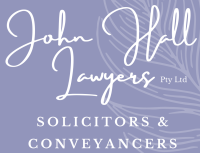Commercial leases form part of many business transactions and commercial property is a popular investment choice. Whether you are a tenant or landlord, there is much to consider when entering into a commercial lease.
Some commercial leases are classified as ‘retail’ and fall under specific legislation – in New South Wales, the Retail Leases Act 1994. With the increase of retail shopping complexes over the years, these laws were introduced to improve the position of a tenant in circumstances that often favoured a dominant owner of a retail centre.
Landlords leasing retail premises have specific obligations such as issuing prospective tenants with certain disclosure information and documents prescribed by the legislation. The laws also set out other compliance matters such as minimum lease terms, how rent reviews operate and assignment provisions.
Many lease disputes arise because the parties are unaware of their rights and responsibilities, or the terms of the lease are ambiguous.
This article explores some common terms of a commercial lease and flags important issues so that potential traps might be avoided. The information is for general purposes only, and we recommend involving your lawyer in the preparation and review of any documents before committing to a lease.
Defining the area to be leased
To avoid doubt about what area is being leased, the premises must be accurately described. This means including details such as shop or unit numbers, building names, street addresses and a full legal description of the property.
Where the leased premises forms part of a larger space, a floor plan should be attached to the lease with relevant areas highlighted and noting the measurements of the lettable area.
The lease should also include terms regarding agreed use of car spaces, storage facilities and common areas or amenities to be shared with other tenants.
The term of the lease
The term of the lease and renewal options must be carefully considered. From a tenant’s perspective, lease terms should match business plans. For example, if the premises will be used to run a franchise business, the terms in the franchise agreement and renewal options should ideally coincide with those contained in the lease.
Leases containing an option to renew will set out a time period within which a tenant can exercise (give notice) of the option. Option periods are generally construed strictly by the courts and should be diarised to avoid missing out on renewing the lease.
Landlords should review lease terms in consideration of their investment strategy, loan commitments and any plans to sell the property in the future. If a proposed sale is imminent then consideration can be given to whether the property is more marketable with a long-term lease or one that will expire before or soon after the property is transferred. Renewal and expiry dates should be diarised to plan for marketing the property to prospective new tenants to avoid lengthy vacancy periods.
Permitted use of premises
The lease should clearly state the permitted use of the premises. Despite what is noted in the lease however, it is a tenant’s responsibility to ensure the proposed use of the premises complies with any Council or other regulations and any necessary licences are obtained.
Outgoings
The responsibility for payment of outgoings is a common trap – the parties should be clear about who must pay for what and in what proportions. Disputes are usually resolved by interpreting the terms of the lease so careful drafting now will reduce costly misunderstandings down the track.
Outgoings for which tenants are generally responsible include utility services, certain ongoing repairs and maintenance, rates and taxes, cleaning, gardening and security. A tenant may be responsible for all or a portion of these services and an estimate of outgoings should always be obtained prior to committing to the lease.
Note that in retail leases, certain types of expenses may be prohibited or limited from being recoverable as outgoings.
Rent and rent reviews
The obligation to pay rent is an essential term of the lease. The frequency of and method for reviewing rent should be stated clearly. Rent review methods are usually by increases in the Consumer Price Index, market review or a set percentage on each anniversary of the lease.
Most landlords request rent in advance, a security bond, a bank guarantee or combination of these to ensure compliance with the tenant’s obligations under the lease.
Fitout and refurbishment
Lease negotiations often involve the fitting out of the premises for the proposed use by the tenant. Any agreement reached should be documented and include:
- The fixtures and fittings to be installed including reference to the agreed quality and standards;
- Who is responsible to carry out the work and pay for it – landlords should sight and approve fitout plans;
- Whether a rent-free period is allowed whilst work is being carried out;
- The obligation for refurbishment or to restore the leased premises to its original condition at the end of the lease.
Checking the facts, registration and consents
Tenants and landlords need to know who they are dealing with. Your lawyer will review title searches, plans and company searches to confirm that the parties and premises in the lease are accurate. A title search will show other interests in the property such as a mortgage or expired lease. If the property is mortgaged the bank’s consent will be required and expired leases may be removed upon registration of the new lease.
Conclusion
Leases should be in writing and include all terms that have been agreed between the parties. Investing time and effort to have your lease reviewed before allowing or taking possession of the premises may avoid potential disputes, inconvenience and future loss.
If you or someone you know wants more information or needs help or advice, please contact us on (02) 4588 5955 or email [email protected].
